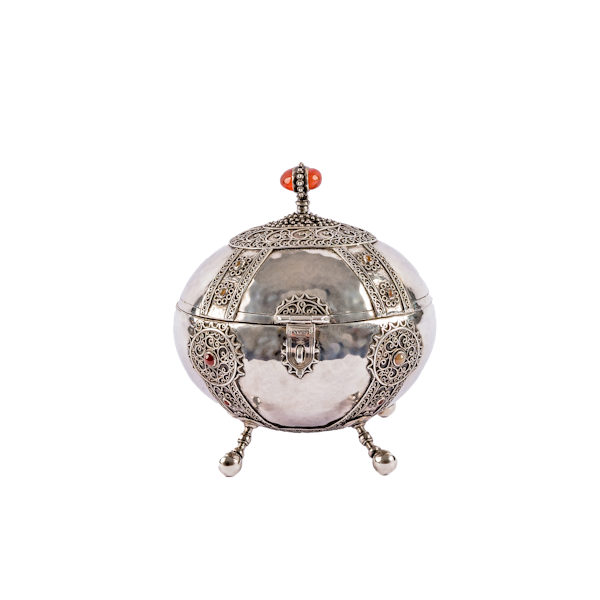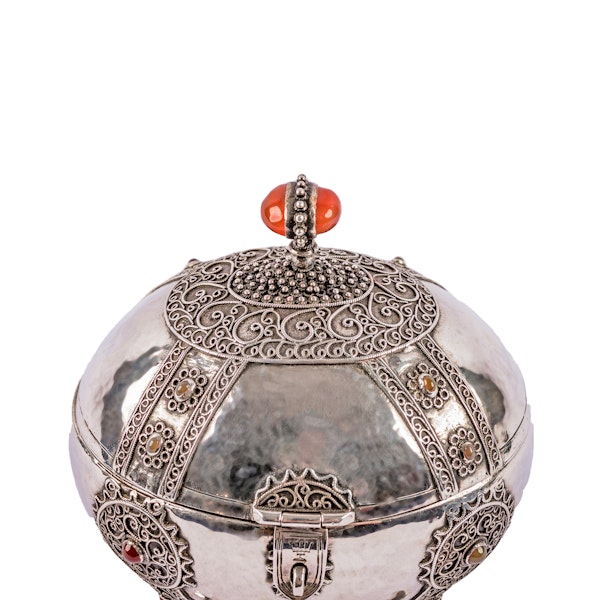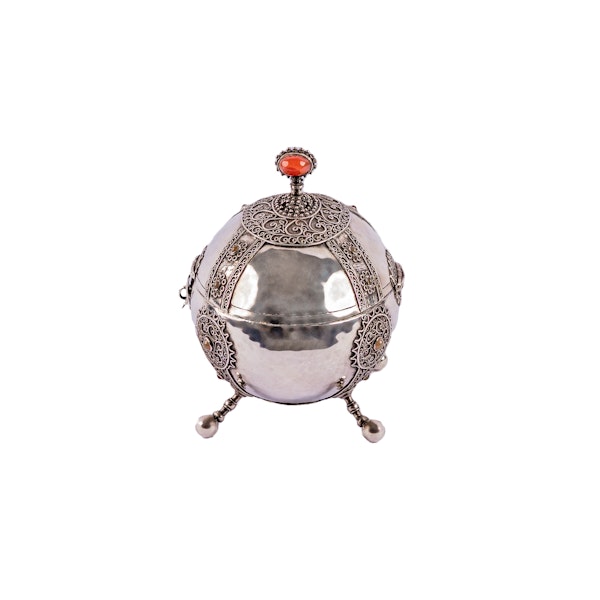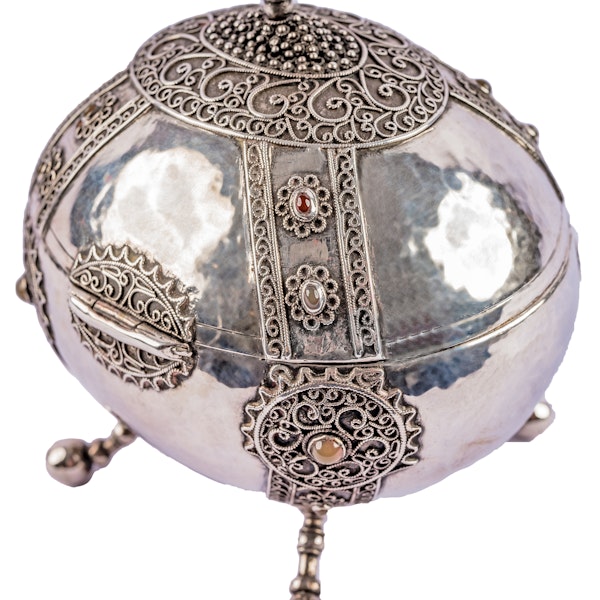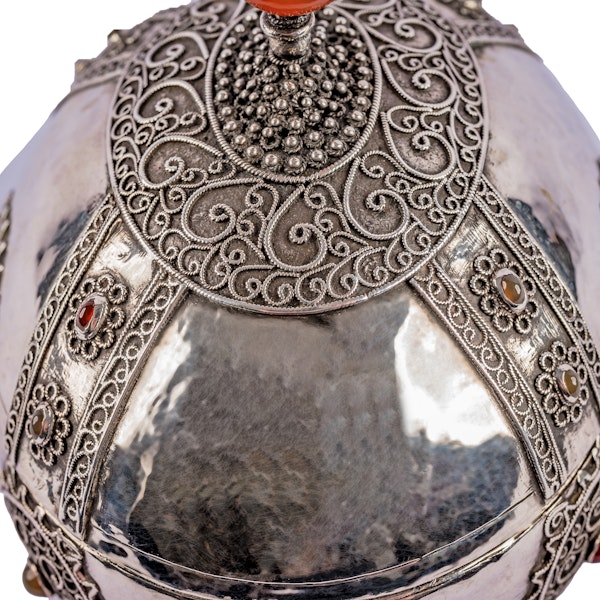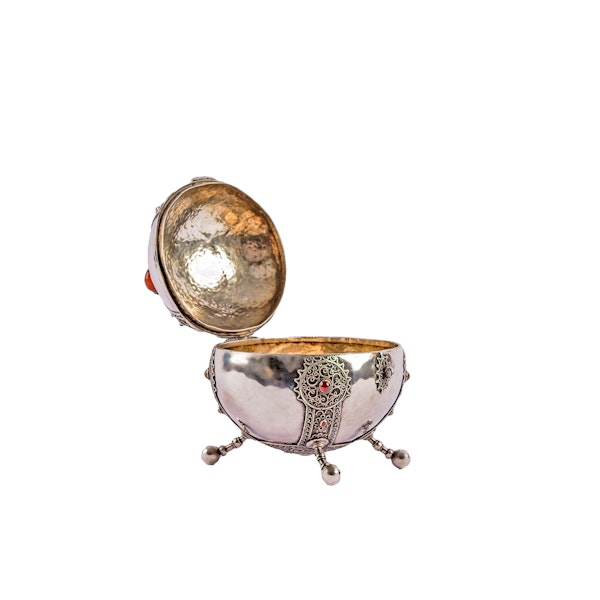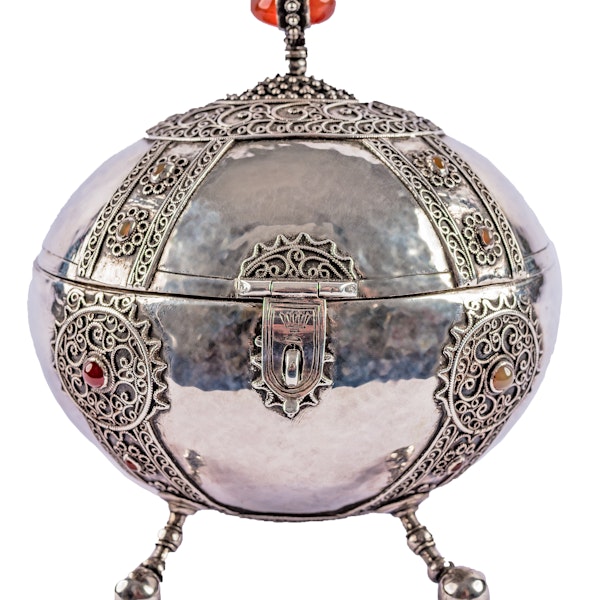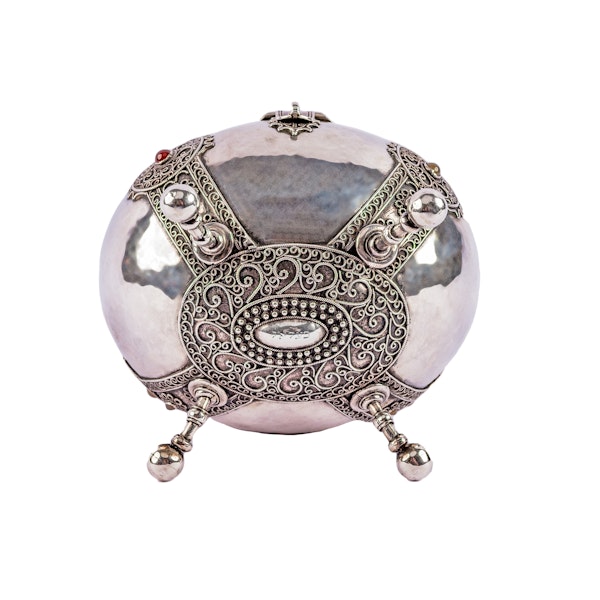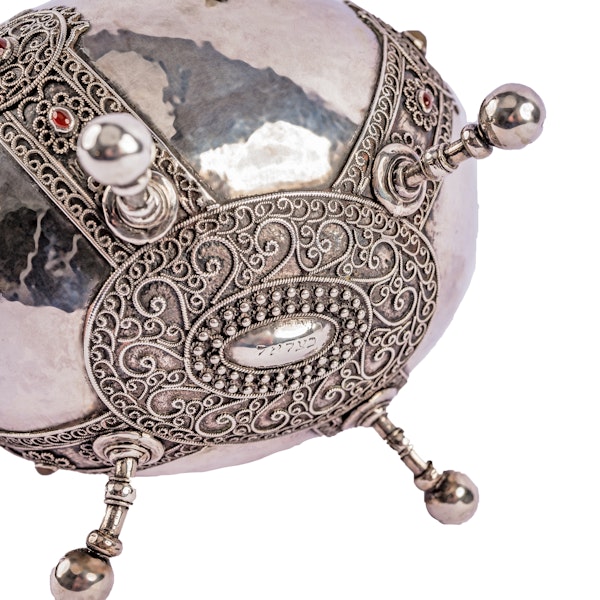An exceptional Bezalel School silver and hardstone Etrog box, Jerusalem c.1910.
An exceptional Bezalel School silver and hardstone Etrog box, Jerusalem c.1910.
POA
Description
An exceptional Bezalel School silver and hardstone Etrog box, Jerusalem c.1910. Of oval form enclosed by filigree straps and bosses set with cabochon carnelians and other stones, the decoration continuing over the base, with raised carnelian finial, on four splayed ball feet with plate lock engraved with a menorah and signed in Hebrew on base with gilt interior.
This magnificent object was created by the earliest Jewish school devoted to art in the then Ottoman Palestine. The Bezalel School was founded in 1906 by Boris Schatz, who had been head of the Royal Academy of Arts in Sofia, and named after the Biblical figure Bezalel who was appointed by Moses to oversee the design and construction of the Tabernacle. Schatz had suggested as early as 1903 to Theodor Herzl that an art school should be founded in Jerusalem, and he envisaged the creation of a Zionist style blending classical Jewish/Middle Eastern and European styles. In 1905 the seventh Zionist Congress passed a resolution supporting such an establishment.
Initially the school operated from rented premises, but in 1907 the property was purchased with funds from the Jewish national Fund and some 30 European students were in attendance.
The Bezalel School attracted Zionist artists from Europe and developed a distinctive blending of the European Art Nouveau movements, drawing particularly from the German Jugendstil and Austrian Vienna Secessionists, with traditional Persian and Syrian artistry and based on Biblical and Zionist subjects.
The Bezalel School produced decorative art objects in a wide range of materials: silver, leather, wood, brass, and fabric. While the artists and designers were European-trained, the craftsmen who executed the works were often members of the Yemenite Jewish community, which had a long tradition of craftsmanship in precious metals. In Yemen, filigree jewellery making was a respected profession among the Jews, with cultural as well as religious applications. Yemenite Jewish silversmiths worked primarily with silver, creating pieces by hand using traditional methods. Yemenite immigrants wearing colourful traditional costumes were also frequent subjects of Bezalel School artists.
The Bezalel campus Jerusalem 1913
The school sold many of its products at the Bezalel pavilion outside the Jaffa Gate which served as a shop and showroom. The school also exhibited wares at various exhibitions around the world. In 1929 the school was forced to close due to financial difficulties but in 1933, following the rise of Hitler, the board of directors asked Josef Budko to reopen the school and act as director. The New Bezalel School of Arts and Crafts opened in 1935 and continues its teaching today.
The etrog is a yellow-coloured fruit which resembles a bumpy lemon. It is also one of the four plants (four species) used during the Festival of Sukkot, the Jewish festival of harvest. It also commemorates the story of the Jews wandering in the desert after they had been freed from slavery in the land of Egypt. It recalls the many miracles they saw during their wandering, the protection of God and the building of booths (sukkot) for shelter during this time. It is also important that the fruit is ‘beautiful’ and therefore many people keep their etrog in a beautiful case.
In line with the Bezalel school’s philosophy, this Ertog box blends the traditional with the modern. More traditional boxes were generally much more standard in form, although often decorated with reference to the fruit or scenes related to the festival of Sukkot. Here the box echoes the shape of the fruit and the inside with its fine hammered and gilt decoration resembles the fruits skin.
The straps are decorated with intricate filigree decoration highlighted with semi-precious stones set within small floral motifs and punctuating the larger more abstract decorations just below the lid. While demonstrating traditional working techniques, the form of this decoration, and the modernity of the box's form, is more in keeping with contemporary European Jugendstil design and the Arts and Crafts movement in Great Britain.
The late 19th century had seen an increased interest in traditional working methods and a reaction against mass production in the decorative arts, this created a revival in craftsmanship while the medium of print meant the dissemination of designs was much more international.
An Erhard & Sőhne box with similar filigree and inset decoration c. 1910
A very similar Etrog box by the Bezalel School was sold from an important collection of Judaica at Sotheby's New York in 2018.
| item details | |
|---|---|
| Origin | Middle Eastern |
| Period | Early 1900s |
| Style | Other |
| Condition | Excellent |
| Dimensions | Width:13cm Height:13.5cm |
| Diameter | Weight: 276 Grams |
Product REF: 10067
